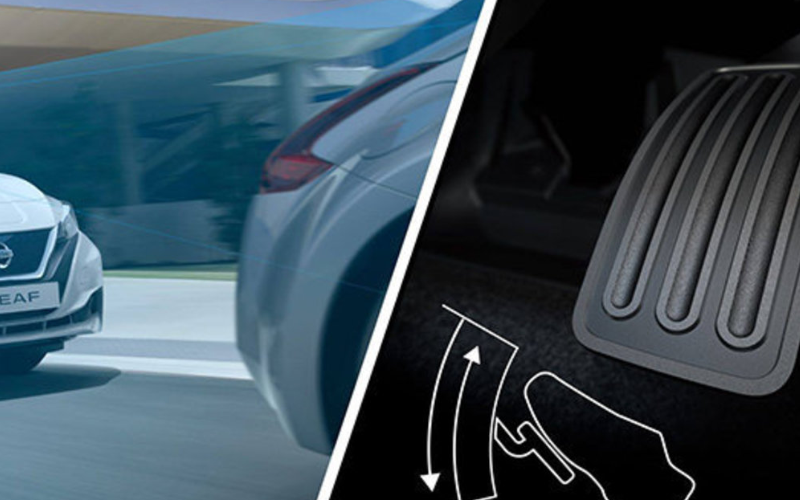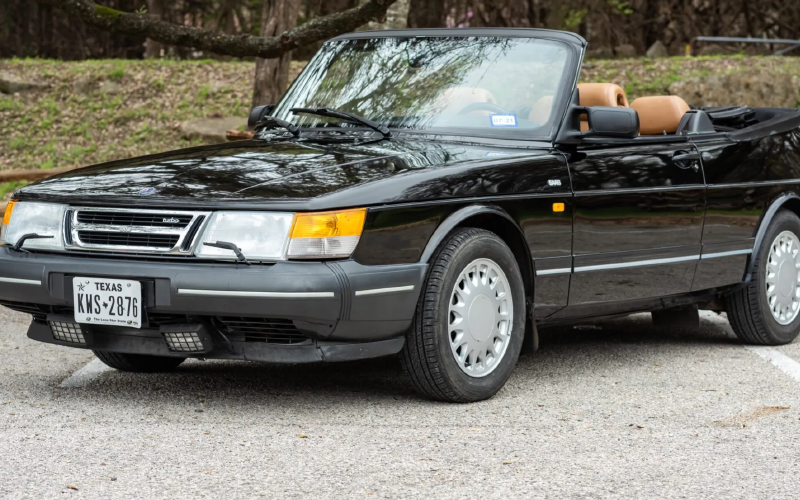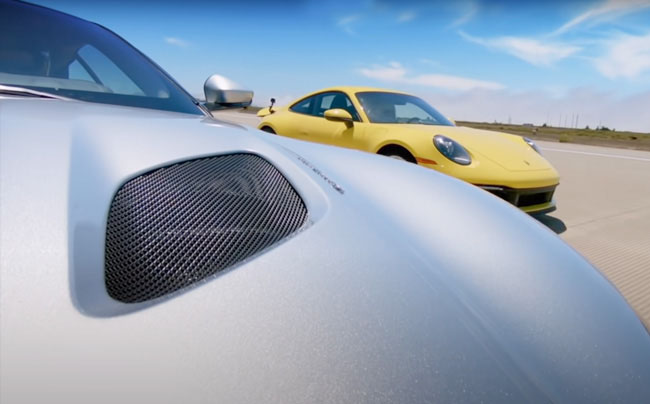Anyone who’s learned to drive a stick knows that a car has up to 3 pedals in the driver’s side footwell. The left one is the clutch, the middle one is the brake and the right one is the gas pedal. That’s Drivers Ed 101, easy and simple. Automatic transmissions started to change this reality. While the technology for automatic transmissions dates back to the late 1930s, it wasn’t until half a century later in the late 1980s that these transmissions really started to take off.
The increasing prevalence of the automatic transmission in the US changed the map of the footwell forever. Gone was the clutch pedal, now just leaving two: the brake and the gas. It was a big adjustment for many, with some even taking it upon themselves to use their left foot on the brake pedal and their right foot on the gas. They quickly learned what a bad idea that was.
Fast forward to the 2011 and a new technology pioneered by Nissan arrives that changes the way we use the footwell all over again. Nissan called it the e-Pedal, but it has since evolved into a full concept of one-pedal driving. In today’s blog, we’re looking at how the concept of regenerative braking is changing the way we drive.
What is “One-Pedal” Driving?
One-pedal driving is a relatively new concept in driving that was first introduced about 10 years ago when the Nissan Leaf revealed its e-Pedal technology (more on that in a case study below). Nissan had established a radical new idea that allowed owners to drive along in their Leaf with minimal use of their brake pedal.
What happens is that the driver first presses the gas pedal as normal, exactly as you’d expect, but when they want to slow down, instead of applying the brake, they would simply ease off the brake pedal and the car would apply a new kind of braking known eventually as regenerative braking. We’ll explain how that works in the next section.
Since the Nissan Leaf, other car brands have also developed their own one-pedal style of driving including Tesla, whose regenerative braking feature has been much celebrated by and large, minus one or two controversies regarding changes made by Tesla to the user settings. The concept has caught on and become very popular among those who drive in the city. We’ll get more into its benefits later on in today’s blog. First, let’s take a closer look at the next piece to this puzzle, regenerative braking.
What is Regenerative Braking?
The one-pedal driving system relies on the efficacy of a relatively new hybrid and electric car technology known as regenerative braking, or just “regen.” This actually does exist to some small degree in some internal combustion engine cars, where hydraulic brakes are able to capture some of the wasted kinetic energy of the slowing vehicle and channel it towards the 12-volt battery, thus taking some pressure from the recharging function of the engine and hopefully saving some fuel. In this form, however, regen was basically unnoticeable. It wasn’t until the technology entered hybrid cars that things really started to hot up.
Early Versions in Hybrid Cars
Some hybrid cars would boast regenerative braking as a game-changing technology, taking kinetic energy from the application of the hydraulic brakes as normal, which reversed the electric motor and then channeled that energy as electrical energy back into the battery. It seemed like a brilliant way to help keep hybrid and electric cars going. Nobody imagined that regen would have the kind of power to make these cars self-sustaining, but it was thought that when used strategically, it could add 20-30 percent onto the range while driving around the city.
It was when Nissan and then later Tesla introduced their one-pedal system that the new form of regen braking started to really take shape. It turns out that that the entire idea really does hinge on the electric motors more than it does the hydraulic brakes.
New Regen Braking
The newest idea behind regen braking is to better make use of the two-direction electric motors that give motion to your EV. The electric motor that a hybrid, PHEV or BEV car uses runs in two different directions. The first drives the wheels forward and gives you motion. The second direction moves to recharge the battery.
Regen works by activating the second mode as soon as you lift your foot off the gas pedal. This was an improvement on the earlier technology, because regen braking in early hybrids still required you to press the hydraulic brake pedal, but it would first do regen braking, and then if you pressed really hard it would switch to conventional brakes.
Now, what happens is that regen braking happens when you remove your foot from the gas pedal. It can bring your car to a complete stop, but is not as easily able to do so as the hydraulic brakes, of course. The main advantage of this innovation is that you can ease off using the main brake. By lifting your foot off the gas, you’re putting energy back into the battery and slowing the car down. You may then only need to tap the brake very gently to stop completely.
Case Study: Nissan and the e-Pedal
As we mentioned further above, Nissan was the first company to apply this new technology in the form of its e-Pedal. It was the first pedal that made regen braking not only that didn’t require application of the brake pedal, but that would allow the driver to start, accelerate, decelerate and stop entirely just by using the accelerator pedal.
At the time, since many drivers were using their Nissan Leaf in the city, it proved a huge relief to be able to drive in heavy traffic by just pressing and releasing the gas pedal and not having to keep switching back and forth to the brake pedal. What was interesting is that when regen braking brought you to a complete stop, the hydraulic brake would automatically engage itself, thus keeping you still while you wait to press back on the gas pedal again. So, unlike the early models, there was no need to apply the hydraulic brake either for regen braking or to come to a complete stop. It is now mostly just for more urgent stops.
Case Study: Tesla and Regenerative Braking
Another well-known brand to apply the regenerative braking technology is Tesla. After performing a number of interesting, even seemingly miraculous things with their braking system, Tesla introduced the one-pedal regenerative braking concept in late 2019, quite a long time after Nissan had already introduced the e-Pedal years earlier.
What are these “miracles” Tesla was performing? Well, if you remember, it was reported on theverge.com back in June 2018 that Tesla managed to perform a fix on the Model 3 brakes just by using one of its over-the-air updates. There had been some complaints about braking distances in the 2018 Model 3, so Musk and the Tesla team decided to do something about it while also showing the true power of their OTA updates at the same time.
The fix was like a miracle to drivers who received it, who suddenly found after installing the algorithm-shifting update, that their Model 3 brakes had gone from being worse than those on the Ford F-150 to having the braking distance improved by a whole 19 feet. Imagine realizing that something from science fiction had just become a reality — Tesla fixed what essentially is a mechanical problem over the Internet.
Flush with that success in 2018, they announced regenerative braking in 2019 and it was first introduced with two settings, “Standard” or “Low.” The former gave you a performance that was comparable to that of the Nissan e-Pedal. It could bring the Tesla to a complete stop and was definitely harsher than the latter setting. “Low” was for those who wanted an easier time retaining control, but didn’t need regen braking to bring the car to a complete stop.
Somewhat controversially, however, in late 2020, Tesla users found out that the “Low” setting had now been removed and the only option was “Standard.” While this didn’t detract from the capability of regen, there were many miffed Tesla owners who had grown used to just using “Low” as a kind of braking aide, but still managing the brakes themselves. They now found that if they wanted to use regen — which many did for the recapture of power for the battery — they were stuck with the overly keen “Standard” mode.
Benefits of One-Pedal Driving:
So, we’ve seen two kinds of one-pedal driving and the accompanying regenerative braking in action. What exactly are the benefits of these? Let’s start with one-pedal driving.
Regen Braking and Range Boost
First, is the fact that you get regenerative braking, which helps extend the overall range and life of your battery. The truth is that as things stand, the difference to your battery is not exactly massive. There are no formal exact numbers on the amount of power it can really recapture as of yet because everyone’s drive is a bit different. On a Tesla Model S, some owners have reported that they could regain as much as 32 percent, stretching every 100 miles to 132 miles if accurate.
Nissan also has not revealed any exact numbers as to how much the e-Pedal can add to your total range. In fairness, it’s hard to estimate because every city’s roads, gradients and other layout and features are all different, so ultimately it depends where you are. If your car has regen braking, and you have long downhill roads you can almost cost down, then the regen effect can be huge. If, on the other hand, you’re on mostly flat roads, then you might not get all the benefits.
Save the Brakes
Second, it takes the strain off your hydraulic brakes. By relying more on the electric motor to run in its normal direction to slow you down rather than always slamming or pressing on the brakes help to preserve your brake pads and the hydraulic fluid and mechanisms that move them. That can save on maintenance costs in the long term.
Driving Comfort
It takes strain off your right foot.As we mentioned further above, when you have regen activated, and you’re driving in heavy traffic, all you need do is press the gas pedal and lift off, press the gas pedal and lift off. There’s no need to do the tiring switch back and forth.
Besides being more comfortable for your foot, the ride quality is also improved by not having to press on the brake pedal. Many of us who have driven in city traffic know the discomfort of creeping along only to be jerked forward because you or another driver just in that moment pressed on the brakes a little hard. It makes the whole experience rather uncomfortable. One foot on, off, on and off is a much smoother and more comfortable process.
Are There Any Drawbacks to One-Pedal Driving?
It’s perfectly true that one-pedal driving still has some way to go before it is perfected. We talked about the issues some Tesla drivers are having with their “Standard” regen braking being overly keen and bringing them to a stop too abruptly, according to some reports.
It also takes some getting used to, if we are to believe the many drivers who tried out Nissan’s e-Pedal for the first time. Such a new concept was quite disconcerting for generations of drivers who had only known what it was before to use the brake pedal. Even those who had made use of early regenerative braking in hybrid cars using the brake pedal softly for regen and hard for hydraulics were not used to the idea of just letting go and waiting for the car to stop.
As the technology has started to mature, however, more and more drivers are now getting used to it and are finding it a much more city-friendly method of braking than the constant “dance” back and force with the right foot.
Obviously as a regenerative force it also still has quite a long way to go. If the people who experimented with the Tesla Model S testing it up and downhill garnering some 32 percent of power added over 100 miles were right, or even close to right, it shows the fantastic potential of this technology as it’s incrementally improved. To be able to extend battery life by any percentage in the current age of EVs is a very valuable attribute indeed.
Finally, there was also some concern regarding brake lights. Many people wondered: if the brake pedal isn’t being depressed with the right foot as normal, then are my brake lights coming on as I’m slowing down under regen braking. It would have been quite a concern to be slowing down at the behest of your regen braking only for speeding cars behind you not to realize that you were because there were no brake lights on.
Some experiments have been done before, with the results posted on YouTube. You can see that for Teslas at least, regen braking does indeed automatically activate the brake lights as you’d want.
Conclusion: Will a Second Pedal Disappear?
Even though it’s easy to see the many benefits that come with one-pedal driving, it’s hard to imagine any scenario in which the manual brake pedal is removed in the same way the clutch has been. The main difference seems to be the need for a contingency.
In the case of automatic transmissions, no contingency was required in the form of a clutch because it wouldn’t have brought any safety benefit to the car. The mechanics of the automatic transmission actually require the absence of the manual clutch. The same cannot be said for braking.
The presence of regenerative braking does not render the brake pedal useless. Far from it. A lot of the time, drivers will need both forms of braking because regenerative braking doesn’t always bring you to a complete stop in time. Drivers can indeed become very adept at using regen braking and can judge distances and time braking well to ensure that the car will bring them to a stop. This is helped by some cars’ ADAS features. However, the need for a contingency remains for those times when the driver needs to apply additional braking pressure to ensure a safe collision-free stop.
In short, the brake pedal is here to stay for the foreseeable future. Until we manage to reach the level of autonomous driving technology that eliminates the need for driver input, we are doomed to be a race of pedal pushers!



